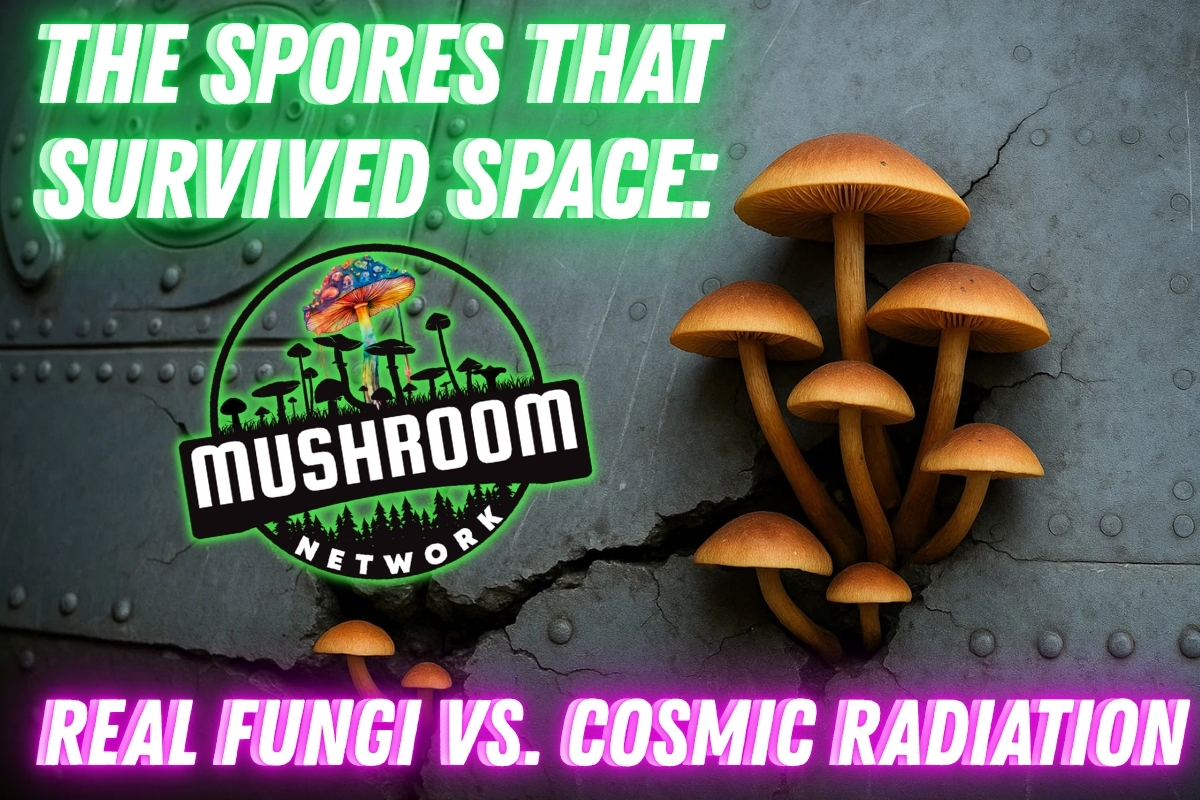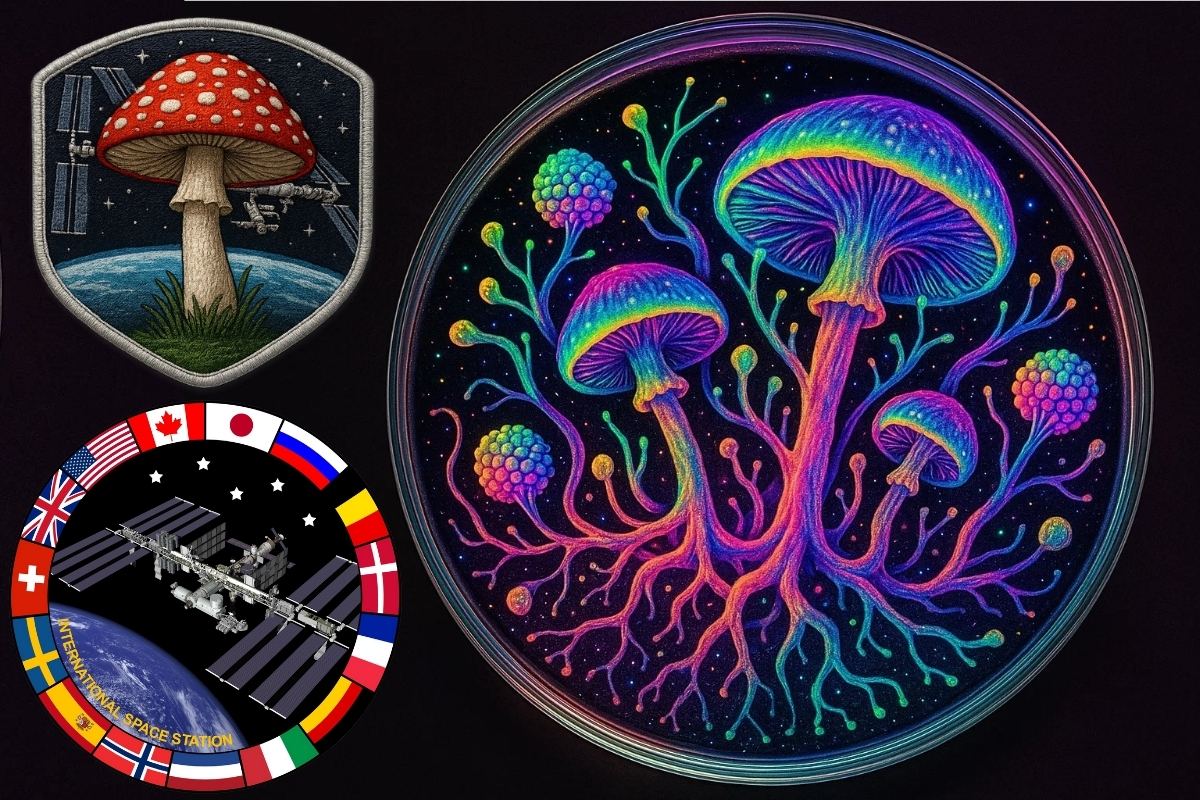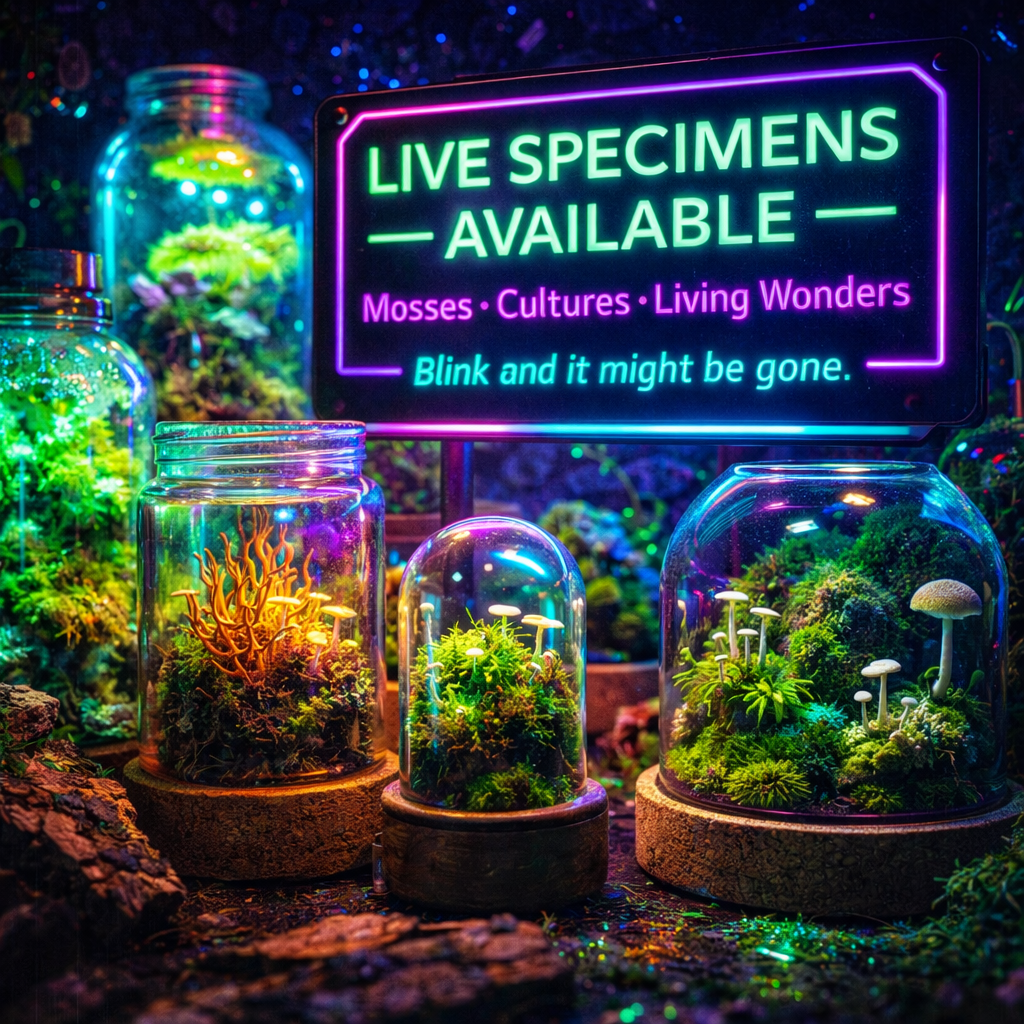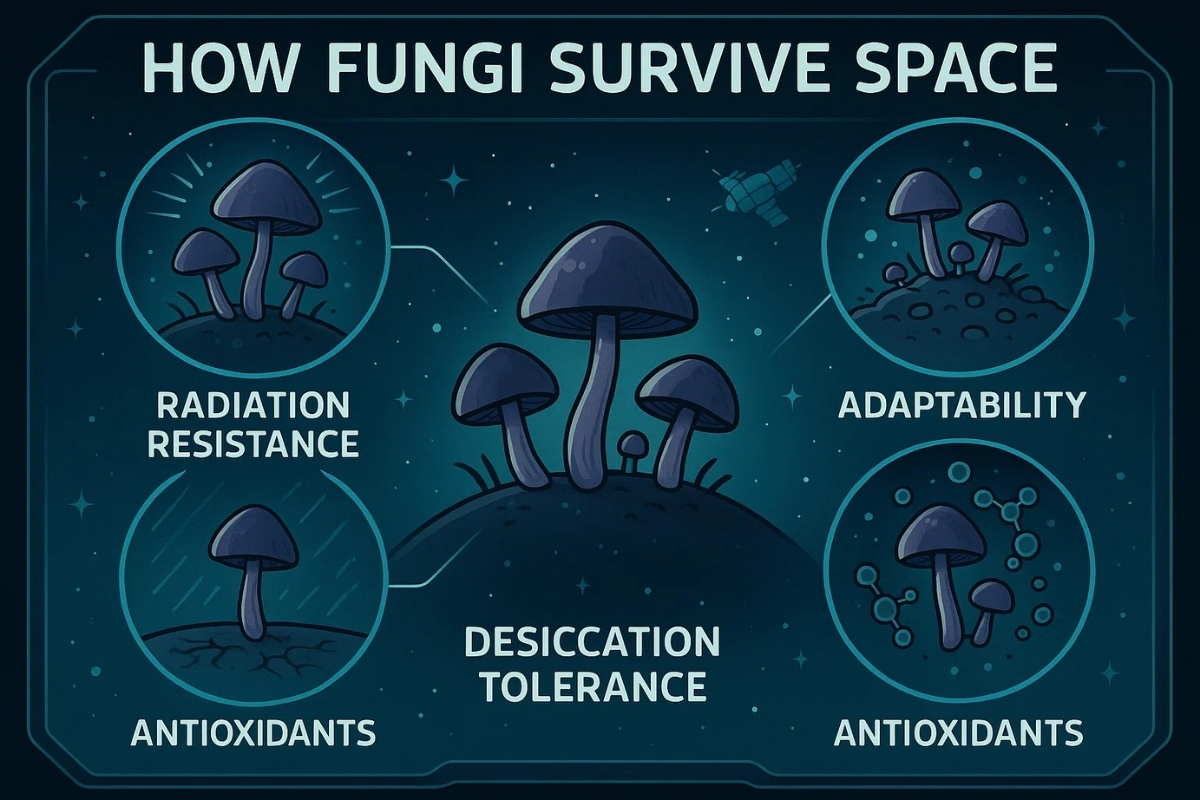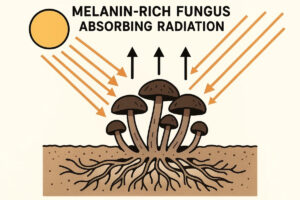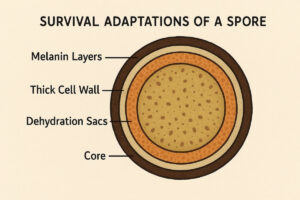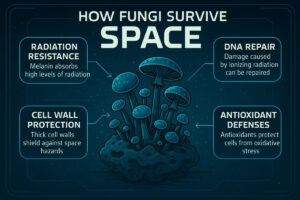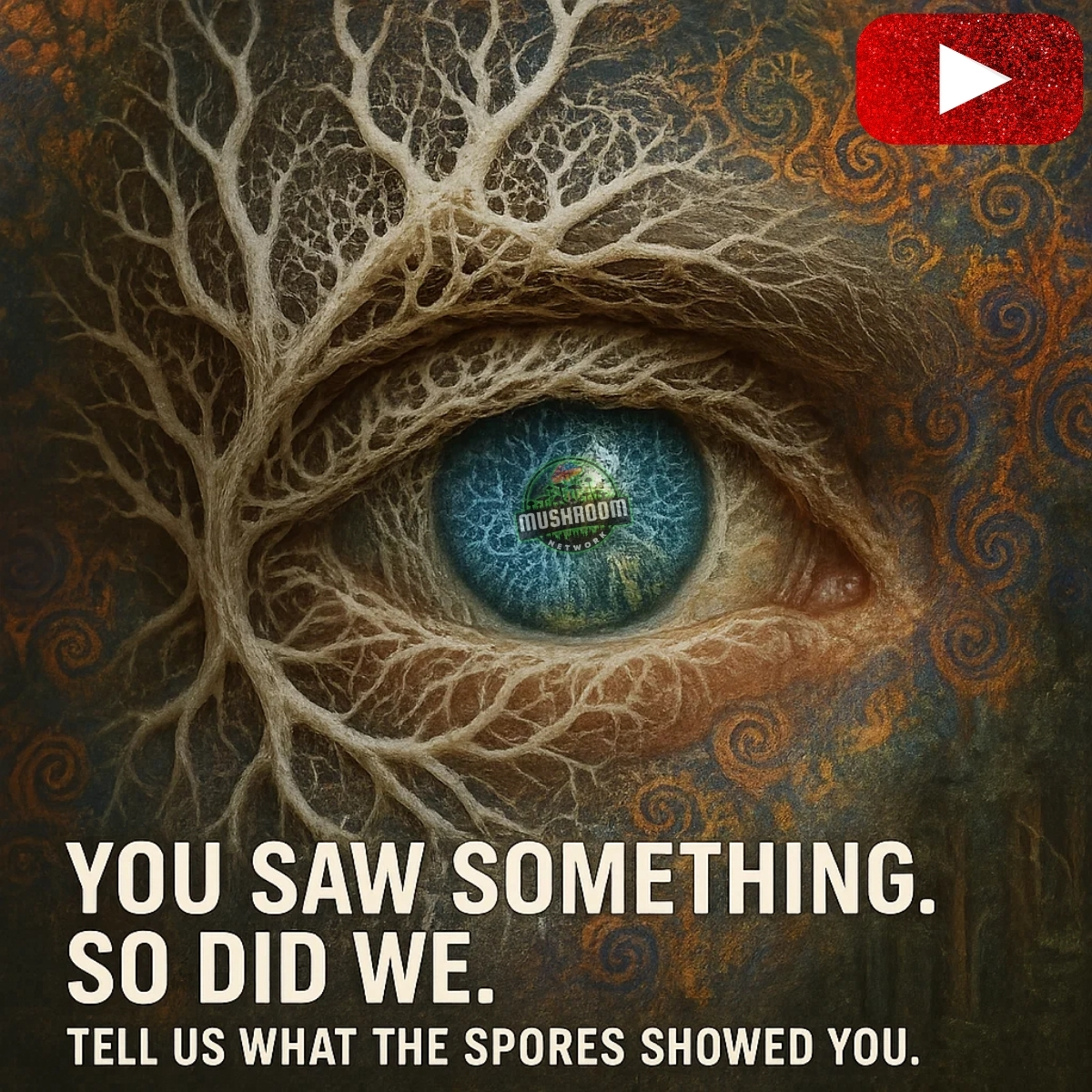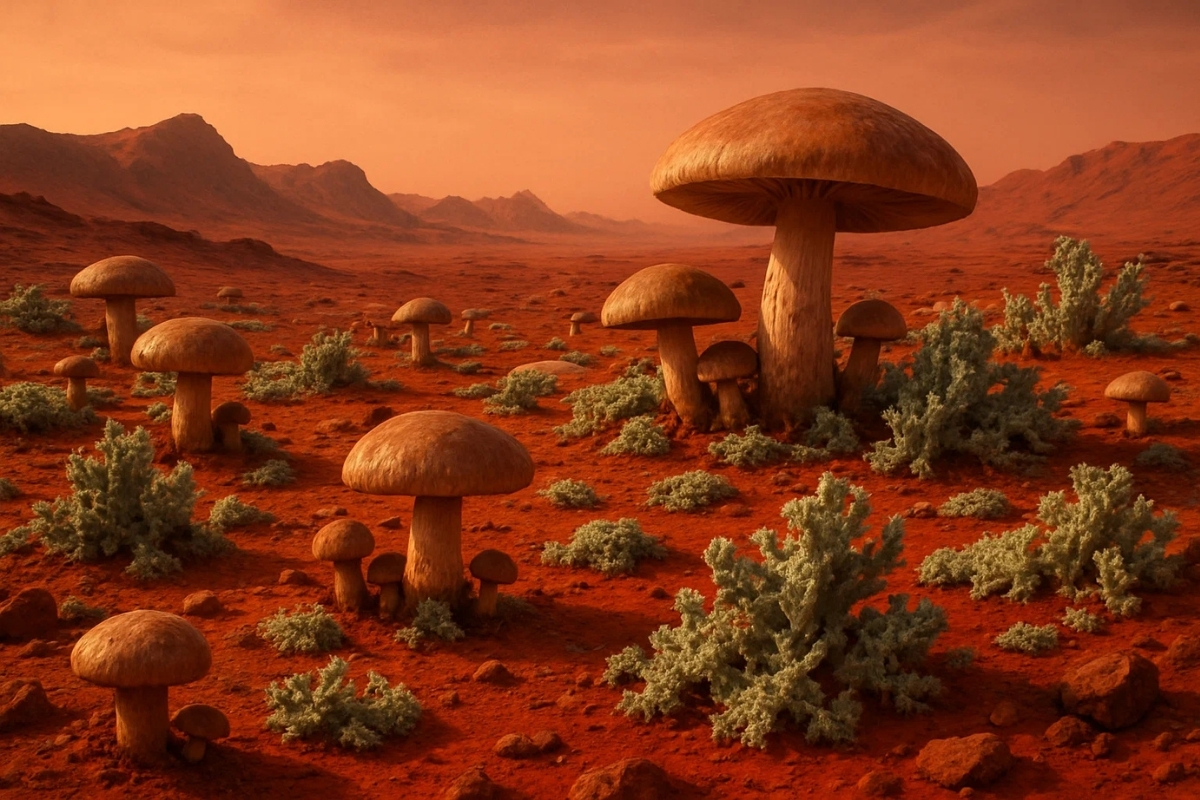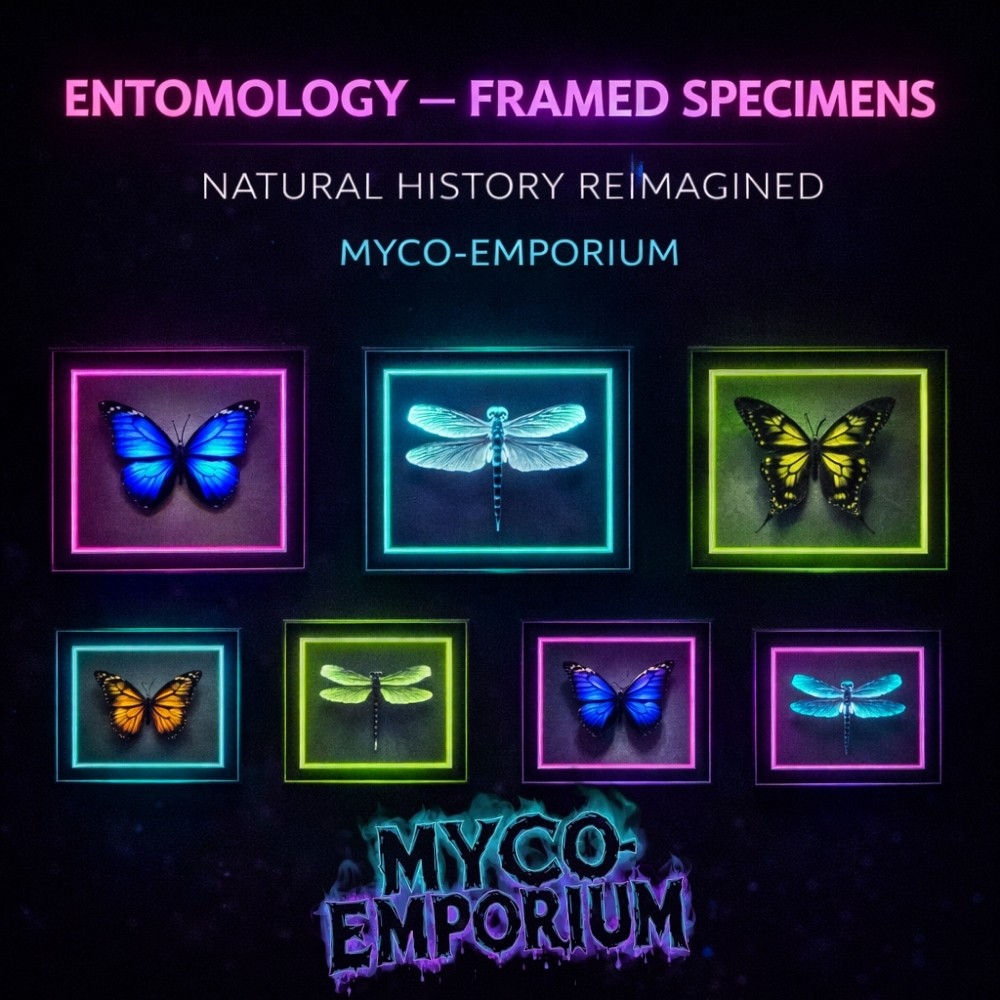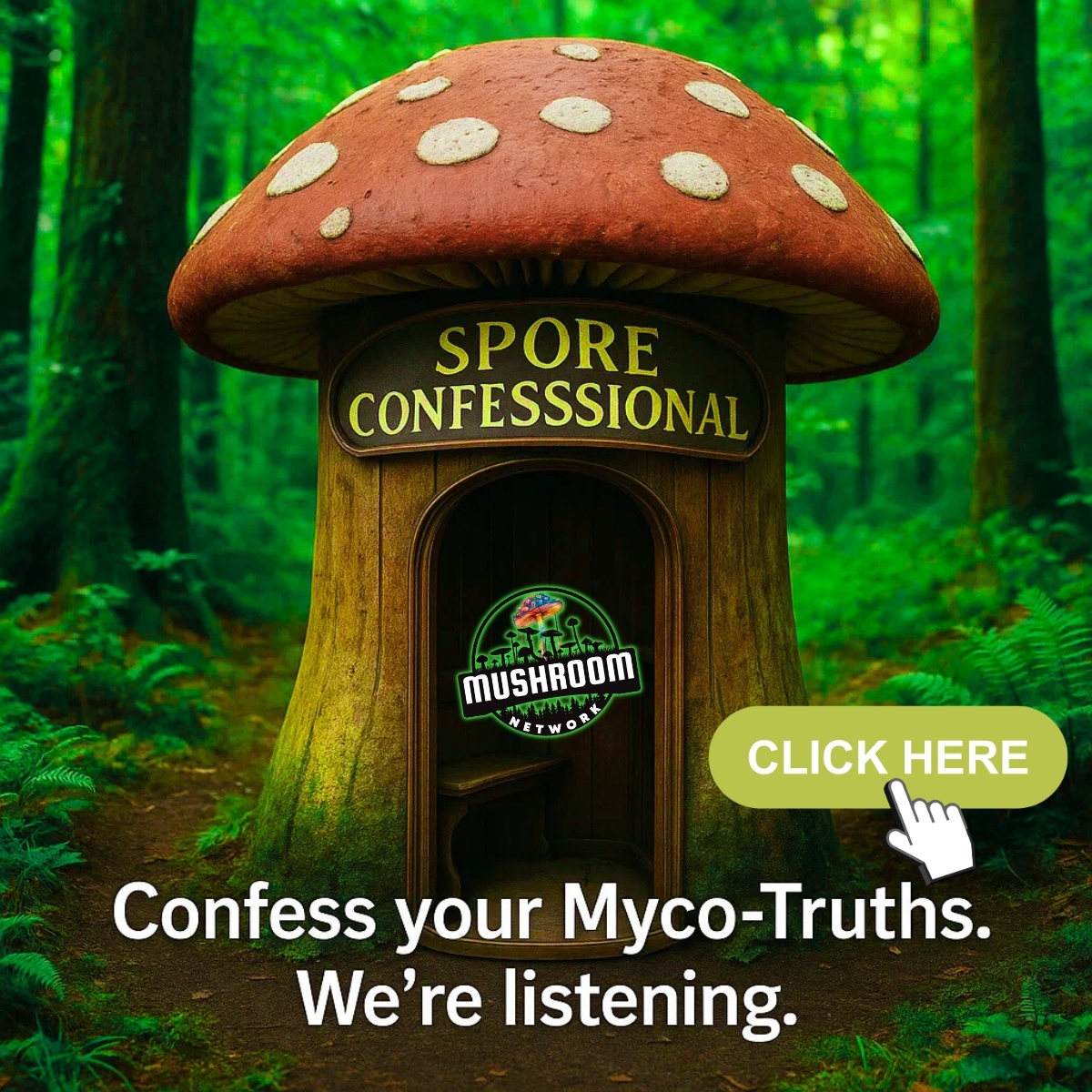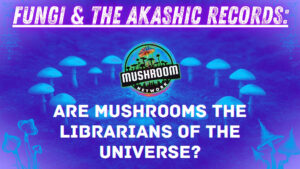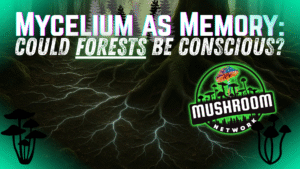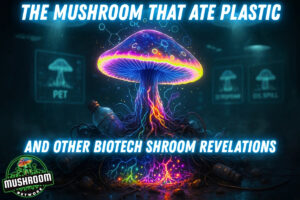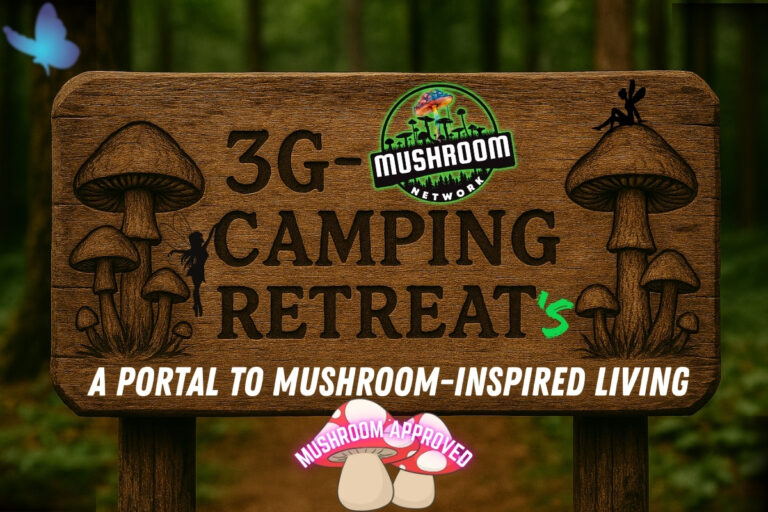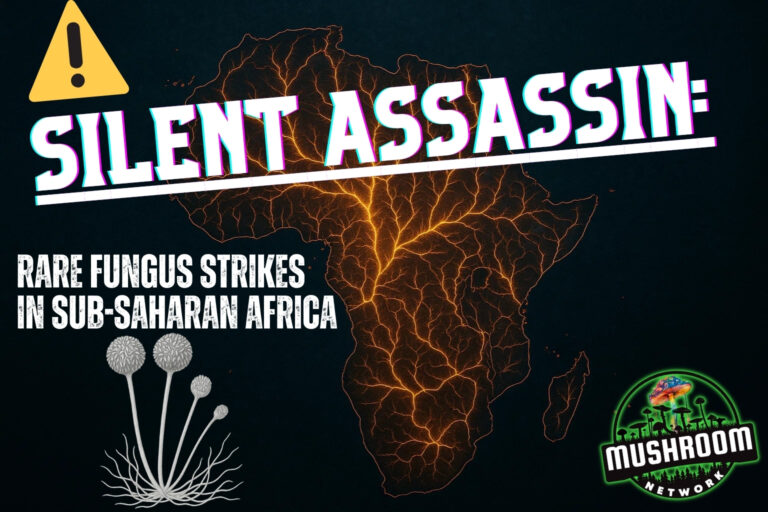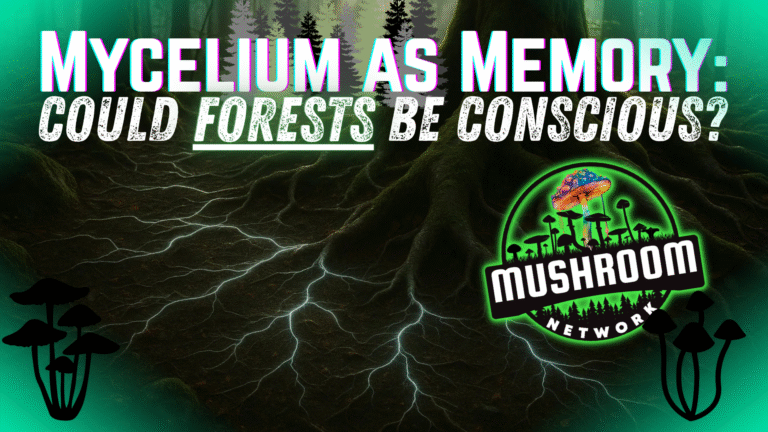The Spores That Survived Space: Real Fungi vs. Cosmic Radiation
They Took Mushrooms to Space—The Mushrooms Lived. Better Than the Astronauts.
Move over, astronauts—fungi might be the real stars of space travel. In multiple out-of-this-world experiments, spores have survived freezing cold, scorching UV, and cosmic radiation without a spacesuit. From ISS experiments to astrobiological daydreams, scientists are now asking: could fungi colonize other planets before we do? Buckle up, Myco-Wanderer—this is the tale of the immortal shroomonauts and their deep-space endurance.
Spores in the Void
Picture this: you’re floating in space, exposed to vacuum, blasted by cosmic rays, dehydrated, frozen, and irradiated like a marshmallow in a nuclear freezer. Your chances of survival? Lower than a truffle in a frying pan. But for spores—tiny, humble, Earth-grown fungal spores—this kind of environment is just Tuesday. In a series of jaw-dropping real-world experiments, fungi have not only survived space exposure… they’ve thrived. Some even showed signs of adapting to radiation. So, Cosmic Traveler, forget SpaceX for a moment. The real pioneers of deep space may be spores hitching a ride on your boot.
The Fungal Space Program You’ve Never Heard Of
🚀 Shroomonauts Go Orbital: Radiation for Breakfast
Forget chimpanzees and billionaires with daddy issues—the real pioneers of the void are spores in space suits.
In 2016, Cladosporium sphaerospermum—a black mold known for thriving in high-radiation zones like Chernobyl’s glowing skeleton—was launched to the International Space Station. The goal? Observe how it handled cosmic radiation.
The result?
This funky little spore thrived.
Not only did it survive radiation levels that would scramble a space toaster, it grew faster.
How? Scientists believe it used a process akin to radiosynthesis, where its melanin-rich cell walls may have captured and converted gamma radiation into usable metabolic energy.
Yes, Myco-Patron:
It was feeding on space radiation.
Like some cosmic mold vampire… except way cooler.
🧪 Spacefaring Spores and Vacuum Vibes
Earlier fungal experiments weren’t just about floating mold in test tubes. These were full-blown spore gladiator trials.
NASA and other agencies launched Aspergillus and Penicillium spores—those familiar funky foot soldiers of fermentation and decay—into the raw vacuum of space. We’re talking:
Temperature swings from boiling to cryogenic
Radiation doses straight from the sun’s death rays
Zero atmosphere
Zero chill
And the results?
Many spores survived.
Some mutated, evolving resistance to radiation or desiccation.
Others came back stronger, showing enhanced bioactivity and new survival traits.
This wasn’t just survival. It was evolution under a strobe light.
Welcome to Myco-Darwinism at light speed.
🧬 Biopan and EXPOSE Missions: Fungi on the Hull
Now let’s turn to the hardcore contenders: the Biopan (ESA) and EXPOSE (NASA) missions.
These weren’t polite Petri dishes floating gently inside a cozy capsule. These experiments bolted fungal samples directly to the outside of spacecraft—full exposure to solar radiation, microgravity, cosmic particles, and vacuum.
Fungal highlight reel:
Cryomyces antarcticus: A rock-dwelling fungus from Antarctica’s frozen crust.
Survived 18 straight months glued to the ISS’s outer skin. No suit. No shield. No problem.Sporotrichum and Xanthoria elegans: Lichen and fungal species that shrugged off the sun like they were wearing SPF 10,000.
Returned to Earth and resumed growth like nothing happened.
Just a casual cosmic stroll, Myco-style.
These aren’t just space tourists.
They’re the prototypes for interstellar lifeforms.
How the Heck Did They Survive?
Ohhh yes, Myco-Wanderer. Now we enter the why of the cosmic conundrum:
How in the spiral-spinning, gamma-glowing, vacuum-sucking heck did those fungal space pirates survive?!
🛡️ Melanin: Fungal Sunscreen on Steroids
Let’s start with the drip:
These space-hardened fungi are wearing organic armor made of melanin.
Yeah, that stuff you might know from human skin tone?
In fungi like Cladosporium sphaerospermum, it’s amped up to bio-shield level—absorbing ionizing radiation and possibly converting it into usable energy, kind of like a goth version of photosynthesis.
Scientists have proposed using melanized fungi as living radiation barriers in future space stations or Martian colonies. Picture this:
Instead of slapping lead plates on the wall, you grow a myco-wall of black mold that blocks radiation, repairs itself, and maybe even snacks on ambient space particles.
Fungal sunscreen. Self-replicating space shield.
Your dermis could never.
💨 Dormant Doesn’t Mean Dead
Space: the final frontier… of dehydration, radiation, and total bodily shutdown.
But for fungi? That’s just nap time.
Spores enter a cryptobiotic state—a biological pause button where metabolism slows to near-zero, water content drops, and cellular activity halts without damage.
They’re not dead.
They’re waiting.
Like ancient prophets sealed in hyphal time capsules, they lie dormant through:
Vacuum
Cosmic rays
UV death-beams
Temperature swings that would crack a NASA rover
Then?
Give ‘em a little moisture, some nutrients, maybe a gentle whisper from the Moon…
and BOOM.
They reboot into full-blown mushroom madness.
No startup lag. No BIOS update.
Just… sprout.
🔁 Mutation Nation: Space Made Me Weirder
Here’s where it gets deliciously unpredictable.
Cosmic radiation hits DNA like a toddler with crayons in a chemistry lab. Mutations are inevitable.
But fungi? They eat mutation for breakfast.
Post-spaceflight spores often return with:
New stress resistance
Faster growth patterns
Enhanced bioactivity
And in some cases… completely new traits
One small step for mold. One giant leap for bioadaptive experimentation.
This isn’t just survival—it’s directed evolution under cosmic duress.
Space is turning fungi into living R&D labs.
We’re not saying you should drink a smoothie made from Martian mold just yet…
…but let’s be honest—someone at a Brooklyn startup is already working on “GammaKombucha™.
What This Means for the Future of Space (and Earth... and 🚀 BEYOND)?
We’ve journeyed through the fungal vacuum, danced with radiation-hungry mold, and now we arrive at the grand finale: the future—of space, of Earth, and of every Myco-Verse in between.
🪐 Mushroom Terraformers: Fungi as Planet-Hackers
Let’s dream for a second.
You’re standing on a lifeless red world.
Barren. Dry. Dead as Elon’s Twitter feed.
Now imagine this:
You drop a spore.
Not just any spore—a myco-sorcerer like Cladosporium or Cryomyces, hardwired for survival, mutation, and biochemical ingenuity.
Within years (or decades, or however time works on Mars), that spore:
Breaks down volcanic rock
Releases bioavailable minerals
Seeds microbial diversity
Builds primitive proto-soil
Begins the terraforming tango nature perfected billions of years ago
No diesel. No bulldozers. No human sweat.
Just quiet, relentless fungal alchemy, converting desolation into potential.
Mushrooms may be Earth’s decomposers…
…but in space?
They’re planet starters.
🏠 Space Homes Grown with Mycelium?
Now let’s go one step spore-ward:
Don’t just use fungi to prep a planet—live inside them.
NASA and innovators like MycoWorks and Red House Studio have been exploring mycelium-based construction materials.
These are not your average bricks, Myco-Patron. We’re talking:
Ultra-lightweight structures grown from fungi and agricultural waste
Self-healing walls that repair cracks like fungal Wolverine
Radiation-resistant insulation powered by melanin-rich mycelial mats
Modular homes that are grown, not built, on-site from spores and Martian dust
Your future Mars habitat?
Not metal. Not plastic. Not IKEA.
It’s a mycelial dome with Wi-Fi and a view of Olympus Mons.
Imagine living in a house that breathes with you. That recycles air. That heals itself.
That, on some deep cosmic level… knows you’re there.
🌍 Lessons from the Void: What Spores Teach Us About Life
Now we zoom back to Earth—not just geographically, but spiritually.
Why does fungal survival in the void matter?
Because it redefines what life is capable of.
It whispers truths we forget while scrolling:
Life doesn’t just survive—it adapts, evolves, expands.
Intelligence isn’t always fast or flashy. Sometimes, it’s moist, quiet, and patient.
What we see as decay is often the start of something brand new.
Fungi remind us that resilience isn’t flashy. It’s fungal.
If a spore can spend 18 months on the skin of the ISS, get blasted with radiation, and still wake up hungry?
Then maybe—just maybe—we’ve been underestimating the mushroom in our mulch pile.
The next time you toss out a moldy orange, ask yourself:
“Could this have survived the vacuum of space better than my iPhone?”
Spoiler: It probably could.
🌟 MycoTip the Network! 🌟
themushroomnetwork@vipsats.app
🌀 Myco-Conclusion: Fungi Don’t Fear the Void
Microscopic. Majestic. Unstoppable.
That’s the spirit of the spore! In the silence between stars, a spore floats—not lost, not scared, just waiting.
No thrusters. No countdown. No mission control.
Just ancient confidence wrapped in a capsule smaller than a grain of sand.
A cosmic maybe. A living potential.
While humans obsess over airlocks and rocket fuel, the fungi have already made the leap.
They’ve bathed in radiation and came back stronger
They’ve slept in vacuum and woke up ready to bloom
They’ve been the first terraformers, the first adaptors, and—very likely—the first survivors
They don’t need to colonize.
They integrate.
They don’t conquer.
They co-create.
So as you, dear Myco-Wanderer, dream of off-world habitats, Mars bases, or Myco-Verses beyond comprehension, remember this:
Fungi are already out there.
Whispering to comets.
Riding on asteroids.
Mapping the stars in hyphal script.
And who knows…
Maybe one day, your soul won’t ride a chariot of fire or an interstellar data stream.
Maybe your next reincarnation begins as a spore—
drifting through the cold dark,
unafraid,
unattached,
and utterly ready…
…to bloom wherever the Network takes you. 🍄✨
Suggested Myco-Articles For You:
Fungi & the Akashic Records: Are Mushrooms the Librarians of the Universe?
Are mushrooms just medicine… or are they cosmic librarians disguised as forest snacks? This article dives into the wild mycelial speculation that fungi are more than biological wonders—they may be key access points to the Akashic Records
Read More...Foraging with the Myco-Wanderer: What Not to Lick in the Woods
You’re wandering the woods. A cute little mushroom smiles at you like a snack. Should you lick it? NO. This Myco-Wanderer survival article is your ultimate guide to identifying (and not
Read More...Mycelium as Memory: Could Forests Be Conscious?
Is the forest… conscious
Read More...The Mushroom That Ate Plastic—And Other Biotech Shroom Revelations
The Mushroom That Ate Plastic—And Other Biotech Shroom Revelations Some mushrooms feed on wood. Some feed on dead bugs. This one craves plastic. Start Your SporeDive 🌌 You’ve heard of composting. Maybe even of mycoremediation. But did you know some mushrooms eat plastic? That’s not a sci-fi concept—it’s real, and...
Read More...How sporetacular was this post?
Tap a star to send your spores of approval (or helpful feedback!)
Oh no! The spores missed their mark…
Let’s co-create a sporetacular post together!
Share your wisdom—how can we make this more Cosmic?

